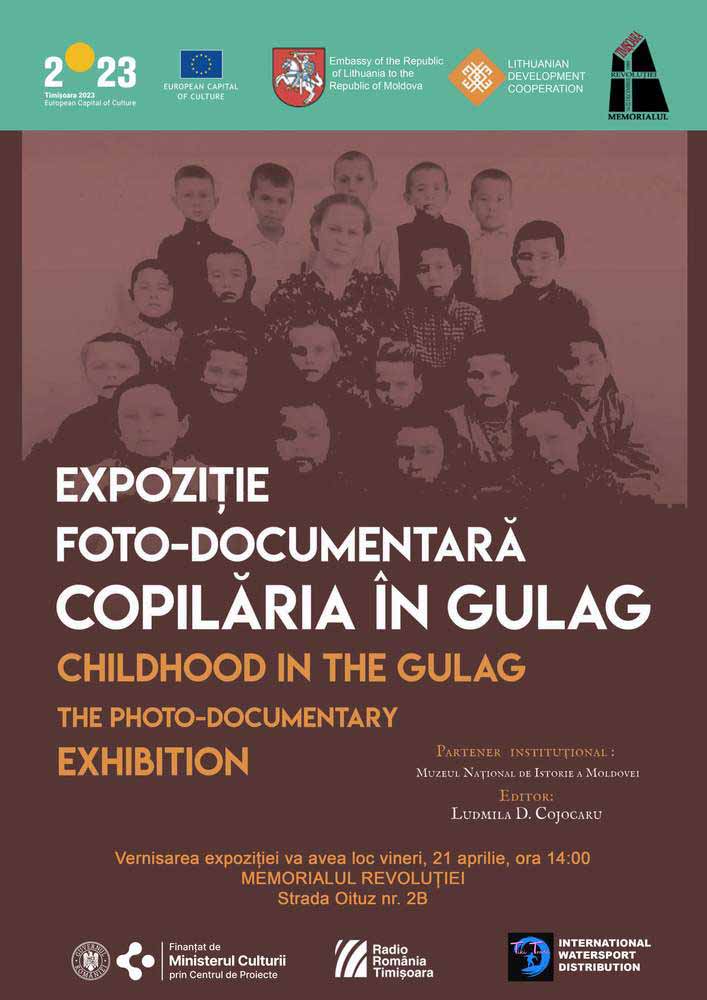 On April 21, 2023, at the invitation of colleagues from the Memorial of Revolution in Timișoara (Romania), took place the vernissage "Childhood in the Gulag" (curator Ludmila D. Cojocaru), organized within the National Cultural Program "Timișoara - European Capital of Cultures in the year 2023".
On April 21, 2023, at the invitation of colleagues from the Memorial of Revolution in Timișoara (Romania), took place the vernissage "Childhood in the Gulag" (curator Ludmila D. Cojocaru), organized within the National Cultural Program "Timișoara - European Capital of Cultures in the year 2023".
The exhibition presents photo-documentary images about the life of Bessarabian children condemned by the totalitarian-communist regime of the Moldavian SSR to deportation, starvation, Russification, indoctrination, forced excision from their own families, during the years 1940-1941 and 1944-1953.
The exhibition approach brings together about 180 photo-documentary images, accompanied by memories and archival documents from the collections of the National Museum of History of Moldova, the Edineț County Museum, the Museum of History and Ethnography from Soroca, the INIS ProMemoria Archive of the MSU, as well as from the archives of the communities memory and of the survivors of the totalitarian-communist regime in the Moldavian SSR.
The Opening started by the presentation of the Director of the Memorial of Revolution in Timișoara, Mr. Gino Rado, who mentioned the importance of carrying out joint cultural projects on historical knowledge regarding the phenomenon of totalitarianism, on both banks of the Prut River. The concept of the exhibition was presented by Dr. Ludmila D. Cojocaru and Dr. Virgiliu Bîrlădeanu, relating on the actuality of the recovering, documentation and historical investigation of the testimonies of the victims of the totalitarian-communist regime in Bessarabia. In his speech, Mr. Cosmin A. Tabără, the deputy mayor of Timișoara, reiterated the existence of dramatic pages of common history, on which we have the duty to reflect in order not to allow their repetition.
The opening of the photo-documentary exhibition "Childhood in the Gulag" at the Memorial of Revolution in Timișoara is a tribute to the memory of children who went through the atrocities of the totalitarian communist regime in the USSR, as well as a commemoration of the recent victims among children in the context of the Russian Federation war on the territory of Ukraine.
The photo-documentary exhibition "Childhood in the Gulag" can be visited between April 21 and May 18, 2023, at the headquarters of the Memorial of Revolution in Timișoara (str. Oituz, no. 2B, Timișoara municipality, Romania).
